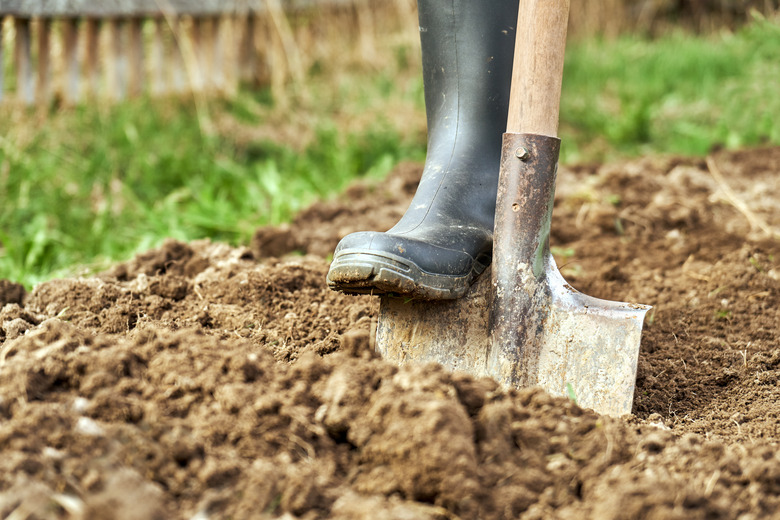Is Clay Soil Acidic?
We may receive a commission on purchases made from links.
Generally speaking, clay soil is not necessarily more acidic than sandy or loamy soil. "Clay" defines the soil's texture, not its acidic or alkaline pH level. However, clay soil acts acidic in a number of ways even when it is not actually acidic, and there are some cases where the two properties are connected.
What Is pH?
What Is pH?
Why do gardeners care about pH? It's because plants can be picky about whether they prefer to grow in acidic soil or alkaline soil. Most plants do well in mildly acidic soil, but some prefer very acidic soil and others require alkaline soil. It is possible to adjust the acidity of the soil with soil amendments.
The abbreviation "pH" stands for the power of hydrogen. It measures whether a substance is an acid or a base by determining how many hydrogen atoms it has. Substances with lots of hydrogen, such as battery acid, vinegar or lemon juice, are very acidic and have low pH numbers, from pH 1 to pH 6. Substances with less hydrogen, such as baking soda or bleach, are more basic, or alkaline, and measure from about 8 to 15 on the pH scale. Water is neutral and has a pH of 7.
Properties of Clay Soil
Properties of Clay Soil
Clay soil has extremely small particles of soil that stick together when they're damp, forming a firm ball when you squeeze the damp earth in your hand. The dense nature of the soil holds both water and nutrients for longer periods of time than sandy soil. Nutrients and water both flow through sandy soil. That means that plants growing in clay soil have more time to absorb water and nutrients than plants growing in sandy soil.
Soil scientists measure minerals in the soil, which are both acidic and basic, using a cation exchange capacity number, or CEC number. The number measures the capacity of the soil for holding minerals by looking at the electric charge of the minerals' molecules and atoms.
Why Clay Seems More Acidic
Why Clay Seems More Acidic
The relationship between clay soil and CEC suggests that clay soil is acidic. That may be the case typically in some areas, but it's not always true.
- Clay soil has a higher CEC count than sandy soil, meaning that it has more capacity to hold hydrogen ions, but not that it necessarily holds enough hydrogen ions to make it consistently acidic.
- Clay soil requires fewer chemicals to lower the pH than sandy soil does, making it appear more acidic. But the amount of additives has more to do with the chemicals running through the soil than it does the pH of the soil to begin with.
- Areas with lots of rainfall frequently have acidic soil, sometimes due to acid rain, and they also tend to have clay soil. But although these are typical features, the texture and pH don't necessarily have a cause-and-effect relationship.
Most nurseries sell soil test kits that you can use to determine whether your garden soil is more acidic or more basic.
